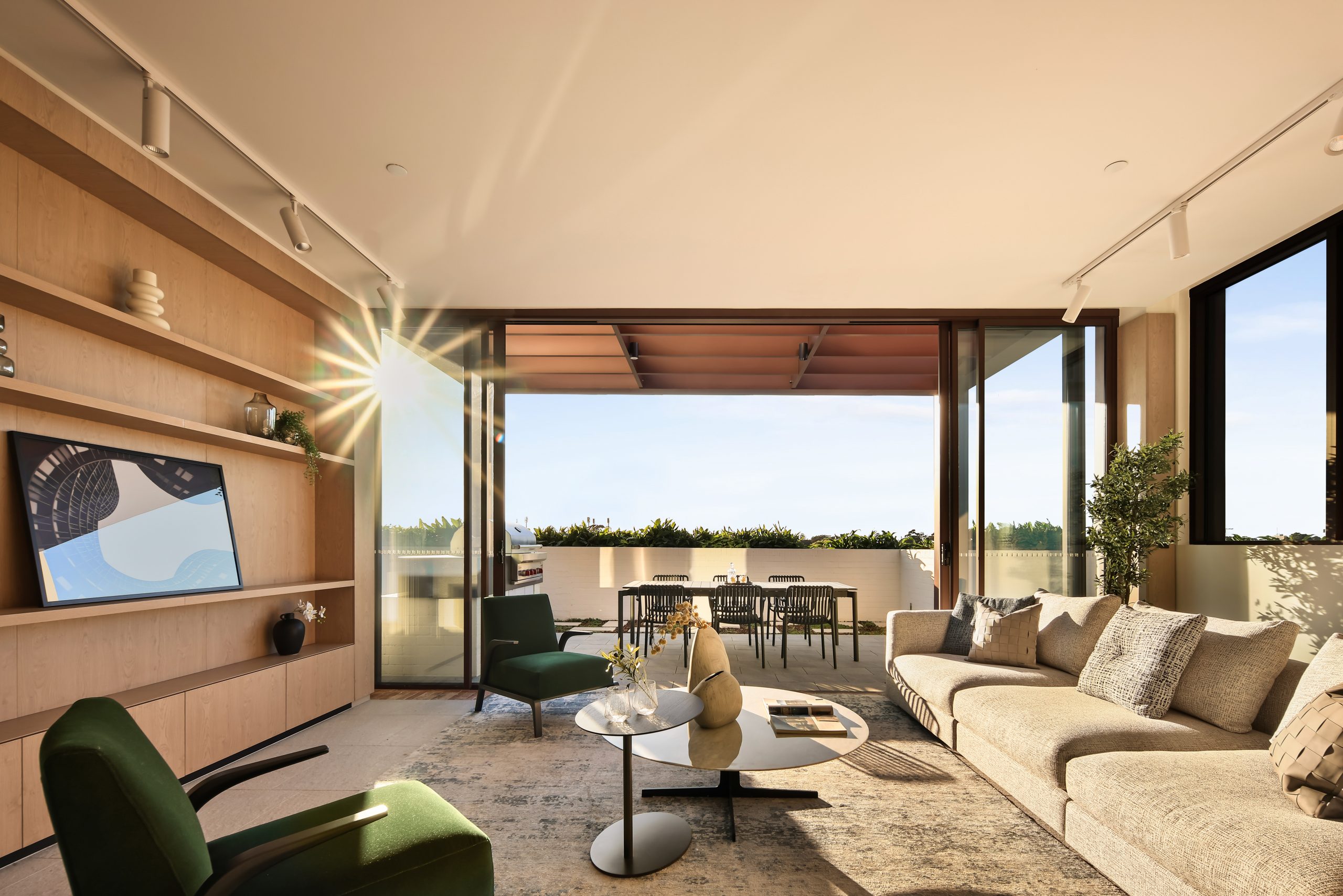White Hardwood Floors: Sacrilege, or Serenity?
Painting over your hardwoods reflects more light. But there’s a cost…
In August, social media lightning rod and artist Caroline Calloway decided to do some spur-of-the-moment home renovations. With piles of clothes and books still on the ground of her Manhattan apartment, she took white paint to all of the hardwood floors. She documented the process on her social media and an uproar ensued. Commenters on Twitter, where it became a trending topic in the U.S., were entertained and mortified about the seemingly slapdash paint job.
Calloway, who has drawn attention with her homemade ornate candles and sparkly collage art, says the white floors are in step with a new aesthetic. “Before, I was a maximal maximalist, and now I am a minimal maximalist,” she says. The inspiration for her white floors simply came from pictures Calloway saw on Pinterest. “They looked really good, and I want my home to look really good.”
The hashtags #whitefloor and #painttok on TikTok show enthused home renovators—both amateurs and professionals alike—opting for stark, white floors over their traditional ones. Redoing wooden floors taps into consumer demand for sustainability and upcycling, and the bucolic-inspired cottagecore aesthetic, which came to define 2020 and a pandemic spent indoors.
“Painted floorboards create a shabby-chic feel that is both welcoming and textural,” says Gemma Riberti, head of interiors at the trend forecasting agency WGSN.
Content creator Brigette Muller posted a TikTok video in July of her finishing painting her wood floors to more than 400,000 views. Muller, who draws inspiration from French and Victorian decorative styles, had actually just moved into a new apartment that already came with white floors. She painted over them to get her desired, warmer shade of white. “White floors have this lived-in, nostalgic quality that just seems to fit perfectly with my overall style,” she says.
Painting wood floors has broad appeal across generations. Lori Guyer, who owns the antique store White Flower Farmhouse in the North Fork of Long Island specializes in renovation works on a budget. She says she’s been painting wooden floors since around 1995, shortly after she and her husband started their family. “I was trying to make a nice home for a family, and I painted floors, I painted furniture, and I did whatever I could do on a shoestring budget,” she says.
In Scandinavia, white floors make the most of available light. Interior designer Karolina Törnqvist, founder of Studio Törnqvist, based in both London and Stockholm, says that it’s something that has been done in Sweden for centuries, dating back to country cottages painting checkered patterns using white on wood floors around the 1700s. It was a cost-effective way to replicate the patterns in checkered stone floors that were found in France and England.
There is one chief concern with having white floors, immediately apparent to anyone with kids. “It’s hard to keep clean,” says interior designer Orlando Soria. During one of the many California lockdowns, Soria stripped his newly acquired cabin in Fish Camp, California of its blue carpet to paint the plywood underneath white. Due to limited options at his local hardware store, Soria used wall paint instead of floor paint.
Guyer recommends one coat of primer, and then two to three coats of floor paint, with an estimated two-day time commitment, from start to finish. She says oil-based enamel paint is the best way to do it, because it gives a durable enamel protective finish. Adding an extra layer of clear coat, she adds, will help protect the floor, especially if you have dogs or young kids in the house, but it’s not a compulsory step, especially when the paint itself already has a gloss or a semi-gloss finish.
The two main factors determining the longevity of the project are your own proficiency and the strength and quality of the paint itself. Guyer says she repainted one floor in her home after five years. Soria, by contrast, estimates that he will touch his floors up with a brush every six months, saying that the sum of the small paint fixes will still cost less than a total floor renovation.
As for Calloway, she still had to put on a top coat by mid-September and says her floor still had a dull, chalky matte finish. “Yeah, that’s on my to-do list, and I’ll probably pay someone to come do that,” she says. “I think I’ll let the professionals handle the polyurethane.”
 Copyright 2020, Dow Jones & Company, Inc. All Rights Reserved Worldwide. LEARN MORE
Copyright 2020, Dow Jones & Company, Inc. All Rights Reserved Worldwide. LEARN MORE
This stylish family home combines a classic palette and finishes with a flexible floorplan
Just 55 minutes from Sydney, make this your creative getaway located in the majestic Hawkesbury region.
A Sydney site with a questionable past is reborn as a luxe residential environment ideal for indulging in dining out
Long-term Sydney residents always had handful of not-so-glamourous nicknames for the building on the corner of Cleveland and Baptist Streets straddling Redfern and Surry Hills, but after a modern rebirth that’s all changed.
Once known as “Murder Mall” or “Methadone Mall”, the 1960s-built Surry Hills Shopping Centre was a magnet for colourful characters and questionable behaviour. Today, however, a $500 million facelift of the site — alongside a slow and steady gentrification of the two neighbouring suburbs — the prime corner property has been transformed into a luxury apartment complex Surry Hills Village by developer Toga Group.
The crowning feature of the 122-apartment project is the three-bedroom penthouse, fully completed and just released to market with a $7.5 million price guide.
Measuring 211sqm of internal space, with a 136sqm terrace complete with landscaping, the penthouse is the brand new brainchild of Surry Hills local Adam Haddow, director of architecture at award-winning firm SJB.
Victoria Judge, senior associate and co-interior design lead at SJB says Surry Hills Village sets a new residential benchmark for the southern end of Surry Hills.
“The residential offering is well-appointed, confident, luxe and bohemian. Smart enough to know what makes good living, and cool enough to hold its own amongst design-centric Surry Hills.”
Allan Vidor, managing director of Toga Group, adds that the penthouse is the quintessential jewel in the crown of Surry Hills Village.
“Bringing together a distinct design that draws on the beauty and vibrancy of Sydney; grand spaces and the finest finishes across a significant footprint, located only a stone’s throw away from the exciting cultural hub of Crown St and Surry Hills.”
Created to maximise views of the city skyline and parkland, the top floor apartment has a practical layout including a wide private lobby leading to the main living room, a sleek kitchen featuring Pietra Verde marble and a concealed butler’s pantry Sub-Zero Wolf appliances, full-height Aspen elm joinery panels hiding storage throughout, flamed Saville stone flooring, a powder room, and two car spaces with a personal EV.
All three bedrooms have large wardrobes and ensuites with bathrooms fittings such as freestanding baths, artisan penny tiles, emerald marble surfaces and brushed-nickel accents.
Additional features of the entertainer’s home include leather-bound joinery doors opening to a full wet bar with Sub-Zero wine fridge and Sub-Zero Wolf barbecue.
The Surry Hills Village precinct will open in stages until autumn next year and once complete, Wunderlich Lane will be home to a collection of 25 restaurants and bars plus wellness and boutique retail. The EVE Hotel Sydney will open later in 2024, offering guests an immersive experience in the precinct’s art, culture, and culinary offerings.
The Surry Hills Village penthouse on Baptist is now finished and ready to move into with marketing through Toga Group and inquiries to 1800 554 556.
This stylish family home combines a classic palette and finishes with a flexible floorplan
Just 55 minutes from Sydney, make this your creative getaway located in the majestic Hawkesbury region.



























